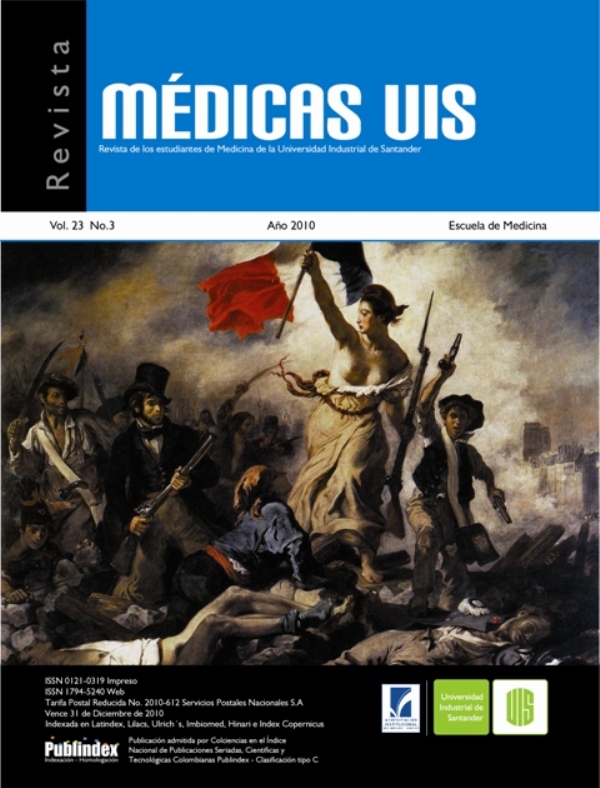Resumen
Introducción. El número de pacientes con cardiopatías complejas corregidas en la infancia que necesitan una sustitución valvular pulmonar para restaurar la competencia o solucionar la estenosis del tracto de salida de ventrículo derecho ha aumentado en los últimos años. El injerto ideal continúa siendo motivo de controversia. En el servicio de cirugía cardiovascular del Hospital Ramón y Cajal de España, se comenzó a utilizar prótesis de pericardio bovina de Carpentier-Edwards® siendo el objetivo de este estudio su evaluación a corto y medio plazo. Materiales y Métodos. Entre enero de 2004 y mayo de 2010 fueron intervenidos 42 pacientes para sustitución valvular pulmonar mediante prótesis de pericardio bovino. El estudio fue ambispectivo con prospección durante los dos últimos años. Resultados. La mediana de la edad fue de 20,96 años (amplitud intercuartil 10,5 años). El número medio de cirugías previas fue de 1,9±0,9 siendo el tiempo medio entre la última cirugía y la implantación de la prótesis de 17,2±7 años. Las indicaciones quirúrgicas fueron: disfunción del ventrículo derecho (45%), su dilatación progresiva (38%), arritmias ventriculares (14%) y síncopes (3%). La mortalidad precoz de causa cardiológica fue de dos pacientes. El tiempo medio de seguimiento fue de 2,1±1,4 años (rango entre 0,1 y 6,3 años) estando el 94,3% de ellos en clase funcional I de la New York Heart Association. El gradiente Doppler pico transprotésico por ecocardiografía fue de 18,5±17 mm Hg. No se observaron cambios degenerativos ni ningún tipo de deterioro estructural de la prótesis. Conclusiones. La prótesis de pericardio bovino en posición pulmonar presenta excelentes resultados a corto y medio plazo. Sin embargo, es necesario un seguimiento mayor para confirmar lo resultados iniciales respecto a su durabilidad y hemodinamia a largo plazo.
Palabras Clave: Cardiopatías congénitas. Prótesis valvulares cardíacas. Tetralogía de Fallot. Válvula pulmonar.
Referencias
2. Bonow RO, Carabello BA, Kanu C, de Leon AC, Jr., Faxon DP, Freed MD, et al. ACC/AHA 2006 guidelines for the management of patients with valvular heart disease: a report of the American College of Cardiology/American Heart Association Task Force on Practice Guidelines (writing committee to revise the 1998 Guidelines for the Management of Patients With Valvular Heart Disease): developed in collaboration with the Society of Cardiovascular Anesthesiologists: endorsed by the Society for Cardiovascular Angiography and Interventions and the Society of Thoracic Surgeons. Circulation. 2006 Aug 1;114(5):e84-231.
3. Oosterhof T, Meijboom FJ, Vliegen HW, Hazekamp MG, Zwinderman AH, Bouma BJ, et al. Long-term follow-up of homograft function after pulmonary valve replacement in patients with tetralogy of Fallot. Eur Heart J. 2006 Jun;27(12):1478-84 Epub 2006 May 17.
4. Husain SAaBJ. Biologic versus Mechanical Valve Replacement of the Pulmonary Valve After Multiple Reconstructions of the RVOT Tract Operative Techniques in Thoracic and Cardiovascular Surgery: A Comparative Atlas. 2006;11(3):207-15.
5. Pass HI, Sade RM, Crawford FA, Hohn AR. Cardiac valve prostheses in children without anticoagulation. J Thorac Cardiovasc Surg. 1984 Jun;87(6):832-5.
6. Ilbawi MN, Lockhart CG, Idriss FS, DeLeon SY, Muster AJ, Duffy CE, et al. Experience with St. Jude Medical valve prosthesis in children. A word of caution regarding right-sided placement. J Thorac Cardiovasc Surg. 1987 Jan;93(1):73-9.
7. Kiyota Y, Shiroyama T, Akamatsu T, Yokota Y, Ban T. In vitro closing behavior of the St. Jude Medical heart valve in the pulmonary position. Valve incompetence originating in the prosthesis itself. J Thorac Cardiovasc Surg. 1992 Sep;104(3):779-85.
8. Marelli AJ, Mackie AS, Ionescu-Ittu R, Rahme E, Pilote L. Congenital heart disease in the general population: changing prevalence and age distribution. Circulation. 2007 Jan 16;115(2):163-72 Epub 2007 Jan 8.
9. Gatzoulis MA, Balaji S, Webber SA, Siu SC, Hokanson JS, Poile C, et al. Risk factors for arrhythmia and sudden cardiac death late after repair of tetralogy of Fallot: a multicentre study. Lancet. 2000 Sep 16;356(9234):975-81.
10. Wessel HU, Paul MH. Exercise studies in tetralogy of Fallot: a review. Pediatr Cardiol. 1999 Jan-Feb;20(1):39-47; discussion 8.
11. Yemets IM, Williams WG, Webb GD, Harrison DA, McLaughlin PR, Trusler GA, et al. Pulmonary valve replacement late after repair of tetralogy of Fallot. Ann Thorac Surg. 1997 Aug;64(2):526-30.
12. Miyamura H, Kanazawa H, Hayashi J, Eguchi S. Thrombosed St. Jude Medical valve prosthesis in the right side of the heart in patients with tetralogy of Fallot. J Thorac Cardiovasc Surg 1987 Jul;94(1):148-50
